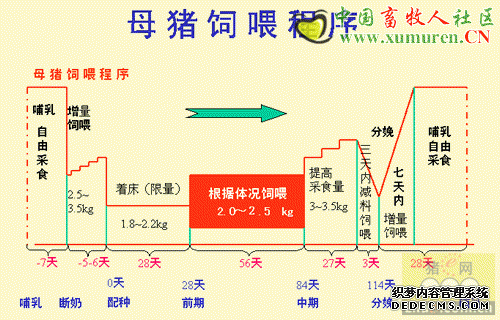By Bernard Peet, Pork Industry Consultant, Lacombe, Canada. Pigs in intensive production systems rely on us to provide for all their needs, whether this be related to space, temperature, light, feed or water.
Spring 2003
by Bernard Peet
It therefore follows that we need to fully understand the pigs requirements in order to optimize conditions for reproduction and growth. However, the systems we use are, by necessity, a compromise between the level of performance we can achieve and the cost of the facility. For example, as we give growing pigs more pen space, growth rate increases but at a certain point the cost of the extra space outweighs the value of the extra growth. Conversely, if we reduce space too much, growth rate falls dramatically and the cost of the lost performance exceeds the saving in building costs.
The space a pig requires relates partly to its size and hence the area it takes up when its lying down and also to group size, pen shape, layout and position of feeders and drinkers. Other aspects of pen and equipment design should also take into account the pigs dimensions at any particular weight, for example the height of the drinker or width of a feeder space. Unfortunately, what I see on farms often demonstrates a lack of understanding among barn and equipment designers of the pigs requirements and in particular its dimensions. I want to show some examples of where this is detrimental to the pig, but more importantly, provide some guidelines that can be used in practice. In future articles I will look at other important aspects of pen design.
So, if size does matter to the pig and may sometimes be a matter of life or death where do we get the critical dimensions from? During the 1980s Dr Jim Bruce, at the Centre for Rural Buildings in Scotland, developed a set of prediction equations based on body dimensions of pigs at various weights. He defined the total area a pig takes up when fully recumbent is its weight to the power 0.66 multiplied by 0.047. Of course, pigs dont always lie fully stretched out and often lie against each other. They may also lie on their sternum taking up less than half the space of a recumbent pig. Therefore we can use the equation Weight (kg) 0.67 x 0.03 to calculate the space required in a fully slatted pen as shown in Fig. 1.
This area is about two-thirds of the area taken by a fully recumbent pig. We must also remember that this is ‘available’ space, not total pen space, so excludes area taken up by feeders or other equipment. In part-slatted pens we may need an additional 20-25% more space depending on the size of the slatted area and in bedded systems 30-50% more. During hot conditions, where possible, we should increase space per pig because they prefer to lie away from each other.
The tip of this piglet drinker is only a couple of inches off the floor,
making it impossible to use.
Drinker height is something I see wrong more often than right. With regular bite or nipple drinkers (which should be angled downwards at 45-60 from the horizontal) pigs prefer to drink with their heads angled slightly upwards, which means that the tip of the drinker should be at shoulder height. This also minimizes water wastage, Dr Bruce defined shoulder height as 16 x Wt0.33 - this will give it in centimetres as shown in Table 1. The table also shows shoulder width for pigs from 5kg to 130kg. This dimension should be taken into account when determining the width of a feeder space or trough length for liquid feeding systems. We normally used 1.1 times shoulder width for each feeding space.
Table 1: Shoulder width and height dimensions for pigsWeight (kg)Shoulder width (cm)Shoulder height (cm)510.927.21013.734.22017.243.03019.749.24021.654.15023.358.26024.761.87026.065.08027.267.99028.370.610029.373.111030.275.512031.177.713031.979.7
Dimensions of nursery and finishing pigs are also important to avoid pigs being trapped especially in feed troughs or gates and pen divisions. Any gap or opening must either be small enough to stop a pig getting its head through or large enough for it to get it in and out again easily. These critical dimensions will vary with size of pig so we cannot use a ‘one size fits all’ approach. I recently saw an example where nursery pigs were drowned in a liquid feeding trough because dimensions of the trough dividers were incorrect. Situations like this are completely avoidable by utilizing pig dimensions.
声明
来源:互联网
本文地址:http://farm.00-net.com/yz/zhu/5/2007-09-20/142411.html








